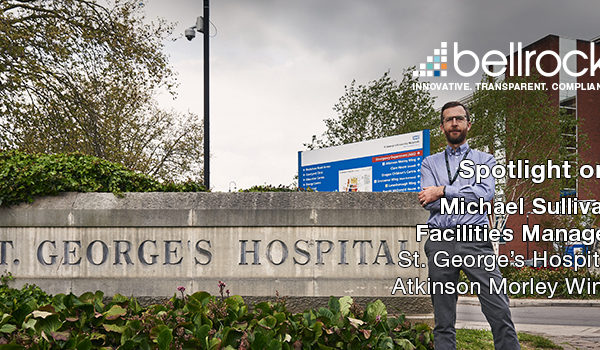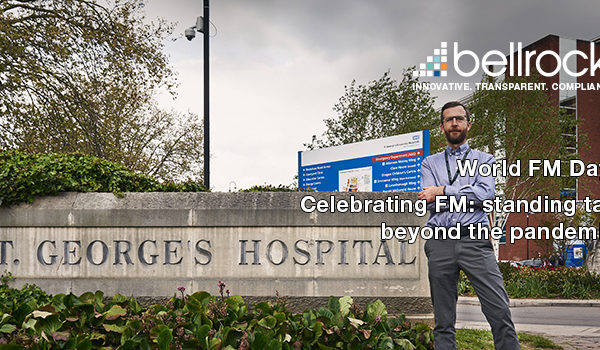At Bellrock we manage several high-profile sites in both public and private sectors. As we turn our attention to returning from Covid-19 lockdown, here are our thoughts on what you need to think about from a security and concierge perspective.
Security workforce during lockdown
On 26 March 2020, the Security Industry Authority (SIA) confirmed; ‘Roles essential to supporting law and order, with the potential to reduce demand on policing, also meet the critical worker definition. This would include, amongst other areas, the guarding of empty or closed commercial, retail or office premises; the monitoring of similar through CCTV or other remote means; and the provision of alarm response centres including mobile units’ as well as ‘…assess whether you can deliver more services remotely e.g. through CCTV. If a physical presence is required, then you should seek to minimise the number of staff deployed to the lowest safe level and ensure social distancing is applied’.
Therefore, it remains possible to secure sites by whatever means are considered necessary, including manned guarding. However, there is a requirement to consider whether security functions can be carried out remotely. At most sites, the level of resource during lockdown will simply be equivalent to typical out of hours, or weekend guarding. This often reflects the minimum resource levels.
During lockdown, the key is to regularly test the physical protection system to ensure it is effective, identifying any failures at an early stage and having measures in place to resolve them. Guarding can be employed if a site is considered vulnerable.
Security considerations during partial / full lockdown
We have set out some key steps to assist building owners / managers, in managing the security risks during the period of reduced occupancy, or complete lockdown:
Security risk management
- Carry out a security risk assessment, to consider any changes to security threats, vulnerabilities and as such, necessary countermeasures.
- Consider suspending access rights for all but critical staff, depending on stakeholder approvals, or furloughed staff, having regard to insider threats.
Assignment instructions
- Review the site-specific assignment instructions, which should include partial / dynamic / complete lockdown procedures.
- Consider whether these procedures apply to the occupied status of the building.
Communications / IT
- Ensure the site IT network / telephone communications are maintained and reliable, to ensure monitoring of physical protection equipment.
- Ensure all key stakeholder contact details are up to date and ensure regular contact, to provide assurance and instructions regarding access / re-entry.
- Consult occupiers to determine re-occupation plans / volumes.
Deter
- Ensure there are appropriate deterrence measures in place, primarily signage, CCTV and lighting.
- Good housekeeping is essential to remove any potential reward.
Detect
- Consult the maintenance provider, to confirm whether remote monitoring of the physical protection system can be established and implement response procedures.
- Alternatively, ensure alarm, notifications and response procedures are appropriate and reliable.
Delay
- Ensure the physical protection system is proportionate to the occupancy levels.
- The number of external points of access should be limited and all other doors should be physically locked down, or secured and alarmed (where required for fire escape).
- Review access control permitted areas and fail open procedures.
Respond
- Subject to the status of occupancy and security risk, it may be appropriate to install a PA solution.
- Consult your security provider to determine a response procedure / commitment and availability of essential static guards, which are considered ‘key workers’.
- It may be necessary to review Lone Worker procedures. Alternatively, consider outsourcing guard patrols at random, via a local service provider.
Systems
- Regularly assess system performance, including day / night CCTV, lighting levels, systems alerts (motion detection, access control, door management, etc), to ensure failures are identified at the earliest possible opportunity.
- Consider Uninterrupted Power Supplies for CCTV installations (access control controllers are typically supported).
- Carry out random surveys and testing. All access and lockup must be recorded and validated.
Maintenance
- Consult your maintenance provider to ensure essential maintenance activities will continue and confirm response procedures.
- Consider how maintenance activities will be coordinated during lockdown.
Insurance
- Ensure appropriate insurance is maintained and relevant to assessed security risks.
Compliance
- Review the full extent of the security team responsibilities and consider whether all statutory requirements are properly managed (H&S, fire, GDPR, etc).
- Ensure that all guard SIA licensing is kept up to date.
Re-entry considerations
Procedures
- Establish procedures for re-entry and communicate with all stakeholders. These are likely to be aligned with heightened threat level response procedures, set out within the site assignment instructions.
- Ensure all occupiers are aware of procedures and consult them regarding phased working hours, to reduce peak flow.
- Define thresholds for scalable increases in service delivery.
Full site patrol
- Carry a full patrol of the site, to identify suspicious items in advance of re-occupation. Ensure findings are recorded and reported to senior management.
Risk management
- Consult stakeholders to ascertain whether there is any change to the threat to each business.
- Consider setting up a local business forum and establish contact with the local Police, for local regular updates.
Systems
- Ensure all physical protection systems are operational and tested.
Signage
Implement clear and concise directional and procedural signage.
Guarding
- Review assignment instructions to determine essential, scalable resource requirements, subject to stakeholder consultation regarding foot fall.
- Consult the security service provider to determine a procedure for reinstating services.
- Consider remote monitoring during reduced guard numbers, to enable focus ‘on the ground’.
Points of entry
- Consider minimising points of access, proportionate to security resource oversight.
Stakeholders
- Consider procedures for separately managing occupier, visitor, delivery, collection screening / access.
Access control
- Reinstate authorised personnel access control.
- Consider a concierge guard, to deter and check ID.
Social distancing
- Consider protection measures for security staff, including stand-off distance and sanitiser.
- Reduce touch points, such as open doors, use of stairwells and restricted lift access (designated upper floors, number of people).
- Consider one-way foot flow.
Ongoing review
- Continue to monitor and analyse access numbers and general performance.
- Provide regular status updates for stakeholders, until a return to ‘normal’.
Mike Smart | MD Workplace & Compliance Services
mike.smart@bellrockgroup.co.uk
+44 (0)7833 050 564







